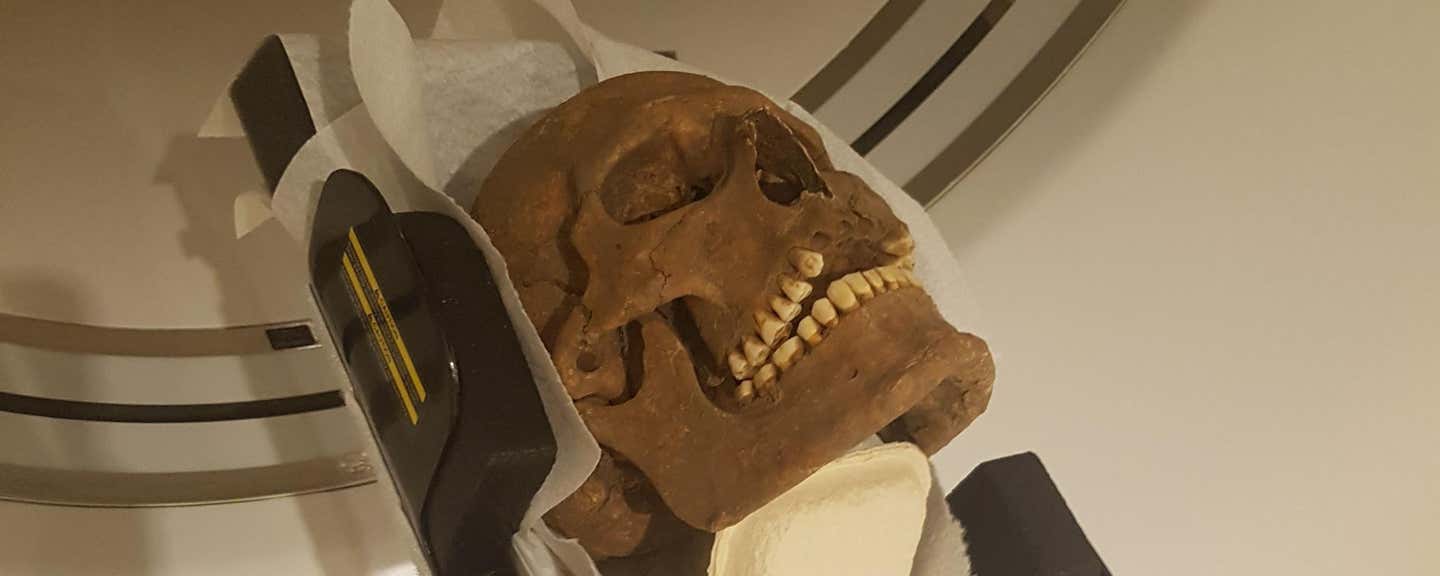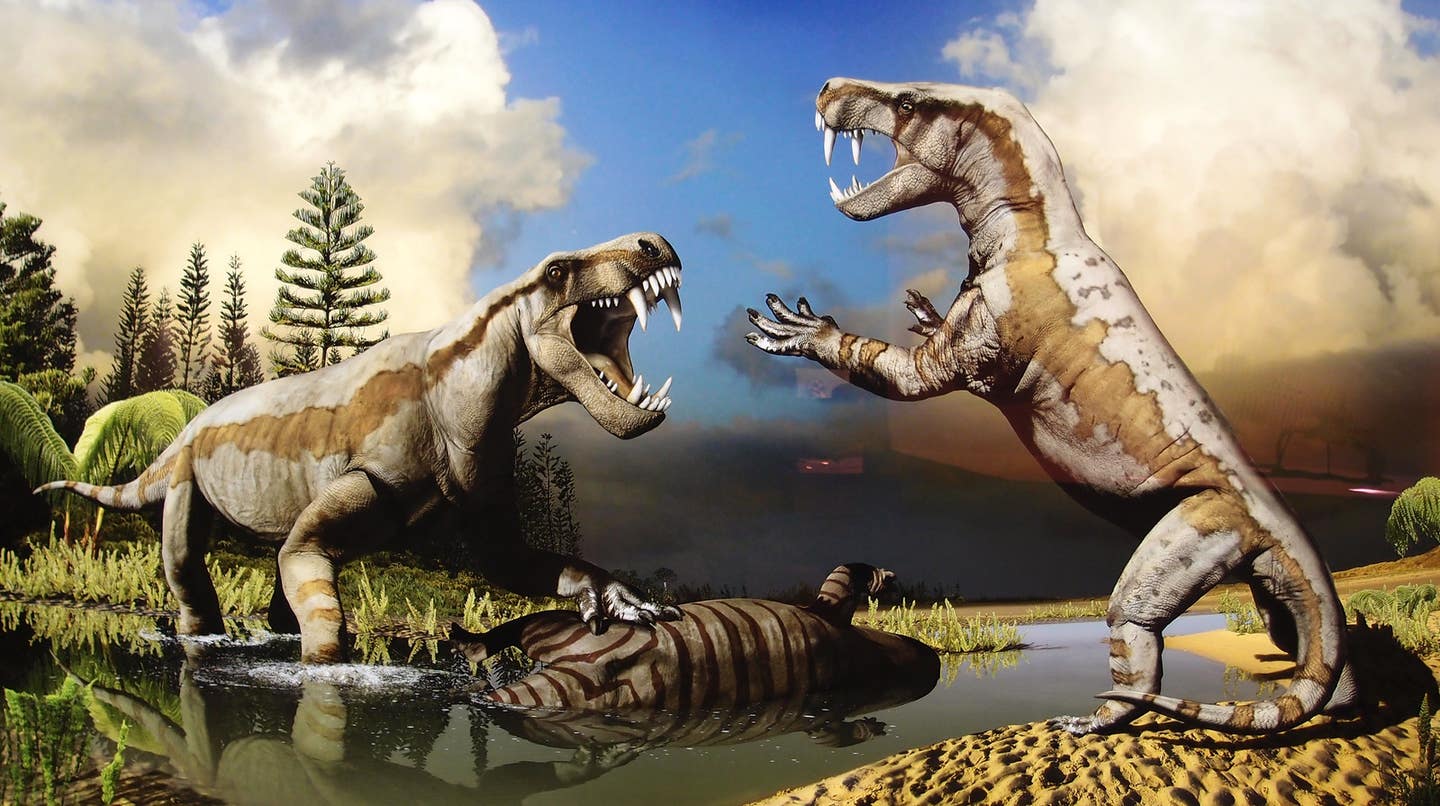Vikings suffered from severe oral infections and facial diseases
Researchers used CT scans to examine Viking skulls, uncovering evidence of severe infections, arthritis, and dental disease.

The skulls of Viking-era individuals were examined with modern computed tomography, in the search for infections, inflammations and other diseases. (CREDIT: Carolina Bertilsson)
Modern technology is shedding new light on the health of Viking-era populations. Researchers at the University of Gothenburg recently used computed tomography (CT) scans to analyze skulls excavated from the Varnhem burial ground, one of Sweden’s earliest Christian settlements.
Their findings, published in British Dental Journal Open, reveal widespread signs of infection and disease among individuals who lived between the 10th and 12th centuries.
The use of CT imaging in osteoarchaeology allows scientists to see beneath the surface of ancient bones without damaging them. Unlike traditional X-rays, which provide two-dimensional images that can overlap, CT scans generate detailed three-dimensional images.
This technology, first introduced in 1971 for medical diagnostics, has become an essential tool in paleopathology. It enables researchers to detect conditions that would otherwise remain hidden, such as infections in the skull or signs of osteoarthritis in the jawbone.
Carolina Bertilsson, the study’s lead researcher and a dentist with Sweden’s Public Dental Service, worked alongside specialists in dental radiology and archaeologists from Västergötlands Museum. They examined the skeletal remains of 15 individuals and found evidence of chronic infections, degenerative diseases, and extensive dental problems.
Painful Lives and Limited Medical Care
The Viking-era population of Varnhem suffered from a range of ailments, including sinus and ear infections that left lasting damage on their skulls. CT scans revealed pathological bone growths in the cranium and jaw, indicating long-standing infections. Many of these individuals likely experienced severe pain without access to effective treatments.
“There was much to look at. We found many signs of disease in these individuals. Exactly why, we don’t know,” said Bertilsson. “While we can't study the damage in the soft tissue because it's no longer there, we can see the traces left in the skeletal structures.”
Related Stories
Dental diseases were also common. The analysis of Viking teeth, conducted in a previous study, had already revealed widespread dental caries and maxillofacial infections. The latest research confirmed that these issues often progressed to severe conditions affecting the jawbone. Given the lack of antibiotics or modern dental care, even minor infections could have led to long-term suffering or even death.
Without the benefit of today’s medical knowledge, Viking-era individuals faced chronic pain with few options for relief. “Everyone knows what it’s like to have pain somewhere. You can get quite desperate for help,” Bertilsson noted. “But back then, they didn’t have the medical and dental care we do, or the kind of pain relief—and antibiotics—we now have. If you developed an infection, it could stick around for a long time.”
CT Imaging Preserves Historical Integrity
Archaeologists and osteologists have long relied on physical examinations and traditional radiographic techniques to study ancient remains. However, CT imaging offers a non-invasive alternative that preserves skeletal integrity while uncovering new details. It is particularly valuable for studying intact skulls and undamaged bone tissue, where external examinations might miss key findings.
In previous studies, CT scans have been used to examine mummified remains, reconstruct facial features, and diagnose ancient diseases. In the case of the Viking skulls, the technique provided a deeper understanding of the health conditions these individuals endured. The ability to analyze bones in layers allowed researchers to pinpoint signs of inflammation and chronic illness that would be difficult to detect otherwise.
Bertilsson and her team hope this study will pave the way for more extensive research using CT imaging. “Very many of today’s archaeological methods are invasive, with the need to remove bone or other tissue for analysis. This way, we can keep the remains completely intact yet still extract a great deal of information,” she explained.
A Glimpse into Viking-Age Life
The Viking-era remains excavated from Varnhem offer a rare glimpse into the past. Their well-preserved condition, thanks to the mineral-rich burial environment, has allowed researchers to study them in detail. With CT imaging, scientists can continue to uncover insights about health, disease, and lifestyle in medieval Scandinavia without damaging these historical artifacts.
The research not only enhances understanding of Viking-era health but also underscores the challenges people faced without modern medicine. Severe infections, joint diseases, and dental problems were widespread, and without access to pain relief or antibiotics, these conditions could be debilitating.
As researchers refine their methods, CT scans may become a standard tool in paleopathology, helping to uncover even more details about the lives of past populations.
The Viking skulls of Varnhem serve as a reminder of how far medicine has come—and how much there is still to learn about the human past.
Note: Materials provided above by The Brighter Side of News. Content may be edited for style and length.
Like these kind of feel good stories? Get The Brighter Side of News' newsletter.
Rebecca Shavit
Science & Technology Journalist | Innovation Storyteller
Based in Los Angeles, Rebecca Shavit is a dedicated science and technology journalist who writes for The Brighter Side of News, an online publication committed to highlighting positive and transformative stories from around the world. With a passion for uncovering groundbreaking discoveries and innovations, she brings to light the scientific advancements shaping a better future. Her reporting spans a wide range of topics, from cutting-edge medical breakthroughs and artificial intelligence to green technology and space exploration. With a keen ability to translate complex concepts into engaging and accessible stories, she makes science and innovation relatable to a broad audience.



